Vowel teams can be really tricky for our new readers and can especially be a headache for struggling readers. Let’s dig into what they are and how I teach them.
What are Vowel Teams?
Vowel teams are two or more letters that together produce one vowel sound. For example, the letters <a> and <i> together make one sound: the long a sound. Vowel teams are one of the syllable types. (Click here to read about all of the syllable types.)
I always thought of “vowel teams” as the letter combinations that make one long vowel sound (like ai, oa, ay, ee, etc). However, vowel teams can really include other vowel combinations (like ou, oo, au,oi etc.) that make other vowel sounds. I’ve since learned there are two types of vowel teams: Vowel Digraphs and Vowel Diphthongs.
Vowel Teams Or Diphthongs?
One thing that always gets confusing for me is distinguishing between vowel teams and diphthongs. This is because when it comes to syllable types, I’ve seen it two ways: I’ve seen them merged together as one syllable type under the umbrella of vowel teams and I’ve seen them separated as two different syllable types. The simple answer is that diphthongs are a type of vowel team.
Diphthongs are letter-combinations that seemingly make one sound, but your mouth actually moves. That means that it is actually two vowel sounds in a single syllable! Let’s use the /oi/ sound as an example. When you make that sound, notice how your mouth moves from one position to another. That is because you are really saying two sounds that sort of slide into each other. Try saying the /ou/ sound like in “house. Notice how your mouth moves and you actually make two sounds? Now say another vowel team, like the long a sound of <ai>. Your mouth doesn’t move at all. It stays in one place and you make one clear vowel sound. I’ve always (incorrectly) used the term diphthongs to basically mean all those vowel team letter combinations that are not long vowels, but it’s a bit more technical than that!
Vowel digraphs are the vowel teams that make one vowel sound. These are what I always just referred to as “vowel teams” and these vowel teams are the focus on this post. These long vowel teams are the letter combinations that make one long vowel sound: ai, ay, ea, ee, igh, ie, oa, oe, ow. You can also include ue and ew in this list because they can both make that long sound (like in “cue” and “few” (although they more often say the /oo/ sound).
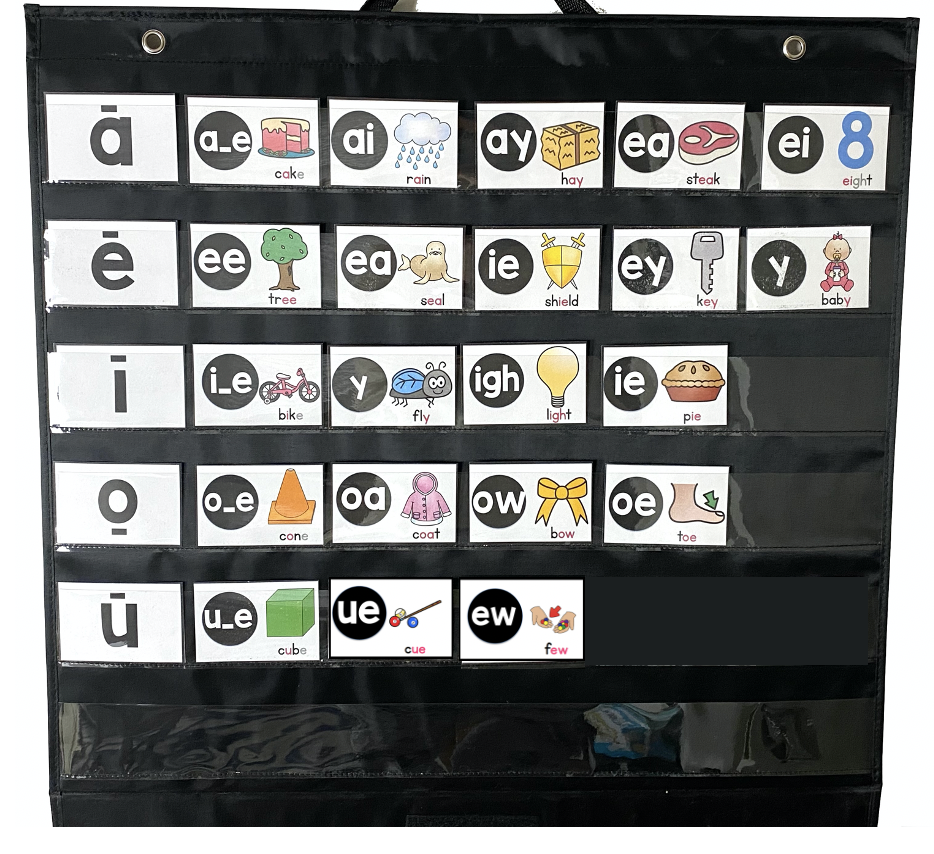
This post is “part 1” because I’m just focusing on those vowel teams that make long vowel sounds, not the other ones. When I teach, I divide all these vowel teams into two sets: The vowel teams that make long vowel sounds (ai, ay, ee, ea, igh, ie, oa, oe, ow), and the vowel teams that make other vowel sounds (oo, ui, ou, ow, au, aw, oi, oy). ew and ue fit into both of those categories so I end up teaching them in both!
How I Teach Vowel Teams
Vowel teams can be really tricky for our new readers and can especially be a headache for struggling readers. Think about it: They’ve finally mastered the fact that there are both long and short vowel sounds. They’ve learned the letter sound-relationships for the letters of the alphabet, digraphs (sh, th, ch), and they have figured out that crazy silent e (vowel-consonant-e) situation. Now, we’re throwing this idea out there that sometimes two vowels can make a long vowel and wait, sometimes they can also make a totally different sound. There is a lot to learn, which is why I really believe teaching these systematically and explicitly is so important. Some of your students will catch on quickly, but some students will need a lot more practice with these new graphemes.
Start with Sound, Not Symbol
One thing I’ve learned is to begin with sound, not symbol. What I mean is that I no longer start out by showing the letters that make up a vowel team. Instead, I start out by bringing up the sound. This can be as simple as saying, “What sound do these words all have in common: rain, sail, paint, laid” They will identify the long a sound as the common sound. Remember this is all auditory, so they have not seen any letters or words. Now that I’ve connected to familiar words and a common sound, I can connect it to the new learning, which is the grapheme <ai>.
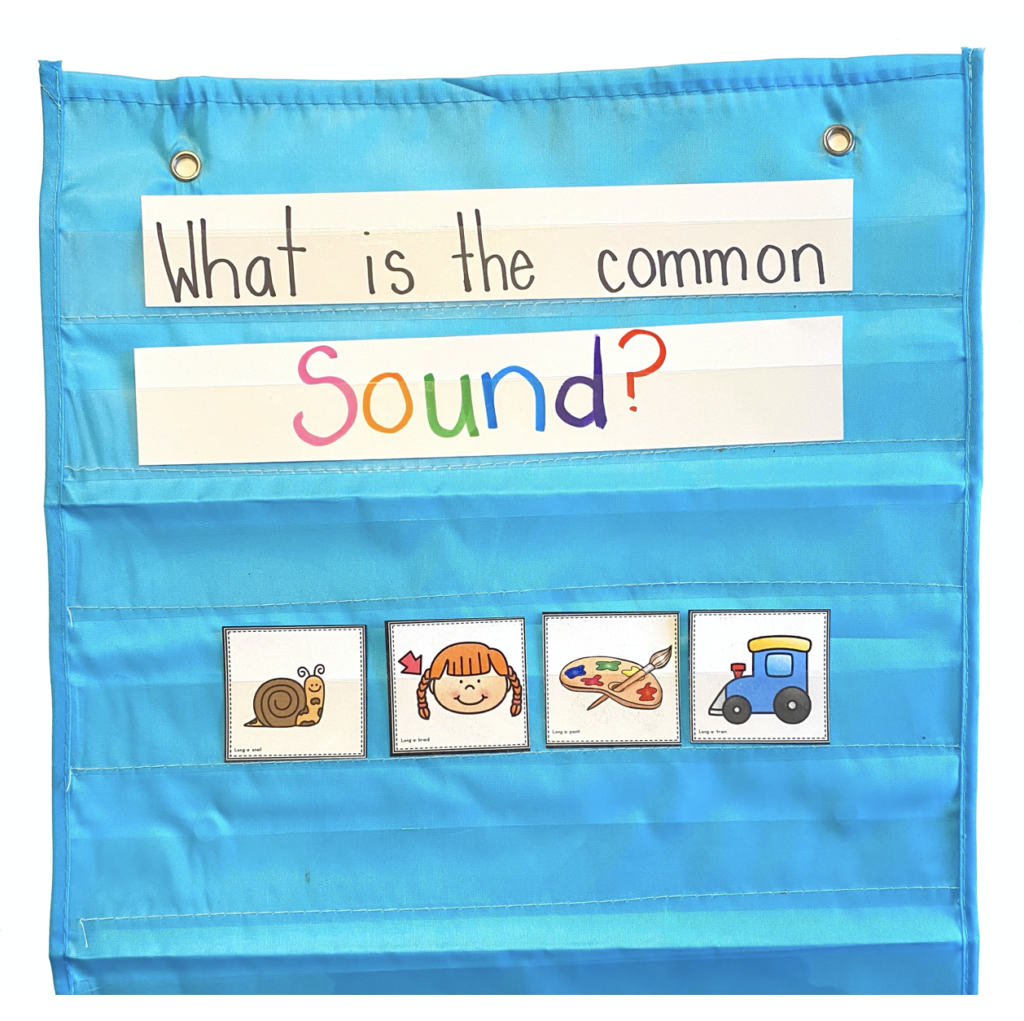
I explain that all of these words use the same letters to spell the long a sound. At this point, I will show them the letters <ai> next to each other and say, “When the letters <a> and <i> are next to each other in this order, they will spell /a/ (long a sound).
Connect to Grapheme (New Vowel Team)
Instead of jumping into reading words with <ai>, I actually spell a familiar word. I’ll take a common word, like “rain”.
- I’ll use it in a sentence, giving students the opportunity to connect to the meaning.
- Together, we break the word up into its sound parts: /r/ /a/ /n/ (that a is a long a).
- I’ll draw 3 sound boxes or use three magnets as manipulatives.
- After matching the /r/ with <r>, I’ll ask: “What sound do you hear next?” They will say /a/ (long).
- At this point, I’ll remind them of their new learning, by saying something like: “You’ve learned that often a silent e can help the letter <a> say its name to make this sound. There is another way to make the long a sound. The vowel team <ai> makes the long a sound.
- We complete the rest of the sound boxes.
- After spelling, I’ll ask: “What letters make the /a/ sound (long) in this word? (Students say <ai>)
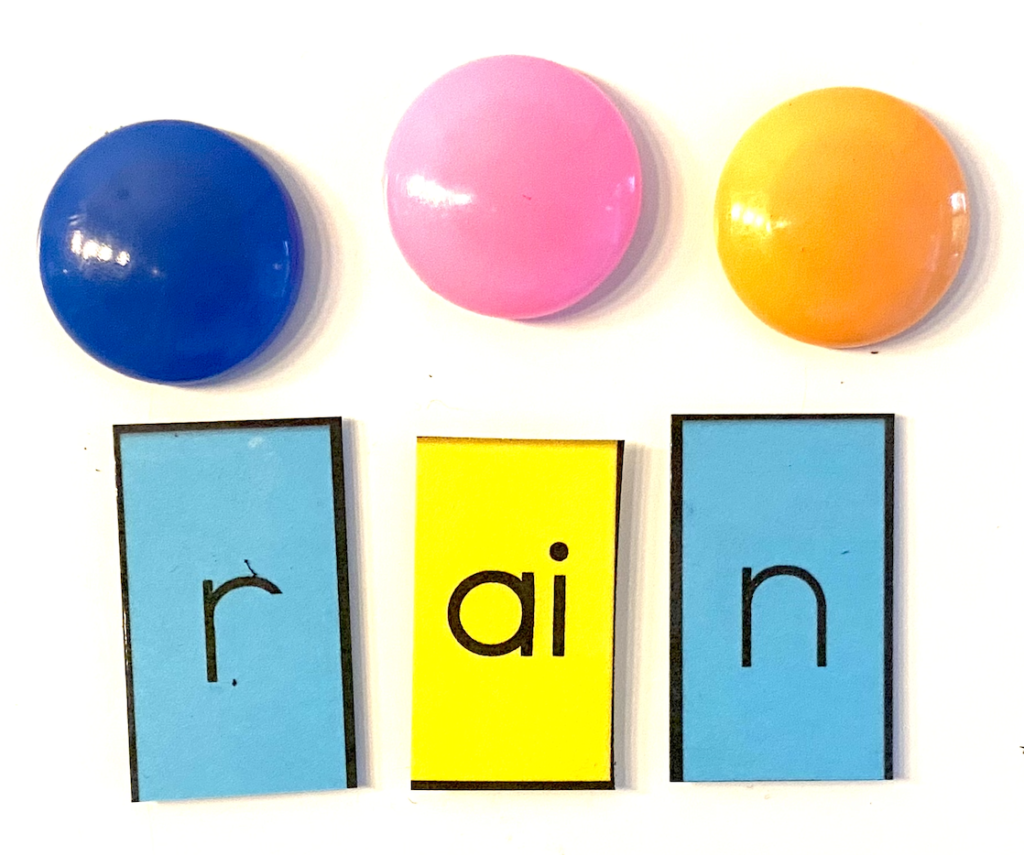
I’ll do this with a few more words, this time having students participate. I’ll give them whiteboards or have them use notebooks to spell along with me.
Next, we’ll practice decoding words with <ai>. I’ll build a word with letter tiles or write a word. I’ll say, “What sound do you expect to hear in this word? What letters represent that sound?” After I model reading, then we’ll read together. To make sure I have total participation, I’ll give students a moment to whisper-read to themselves. Then when I signal, we read the word together.
I use this same set up to introduce the other vowel teams.
Teaching Generalizations for Vowel Teams
Some of the long vowel teams have generalizations that help with spelling. For example, after spelling a few words with long a using <ai>, I’ll point out how the vowel team <ai> is only found at the beginning and middle of words. You will never see it at the end. During the next lesson about <ay>, they will learn that <ay> is a vowel team used when they hear the long a sound at the end of a word. The same is true for <oa> and <ow>. Unfortunately, there is no helpful tip with <ee> and <ea>.
After spending time teaching both <ai> and <ay> or <oa> and <ow>, we’ll practice them together. Students will practice spelling words with these vowel teams by determining where the vowel sound is.
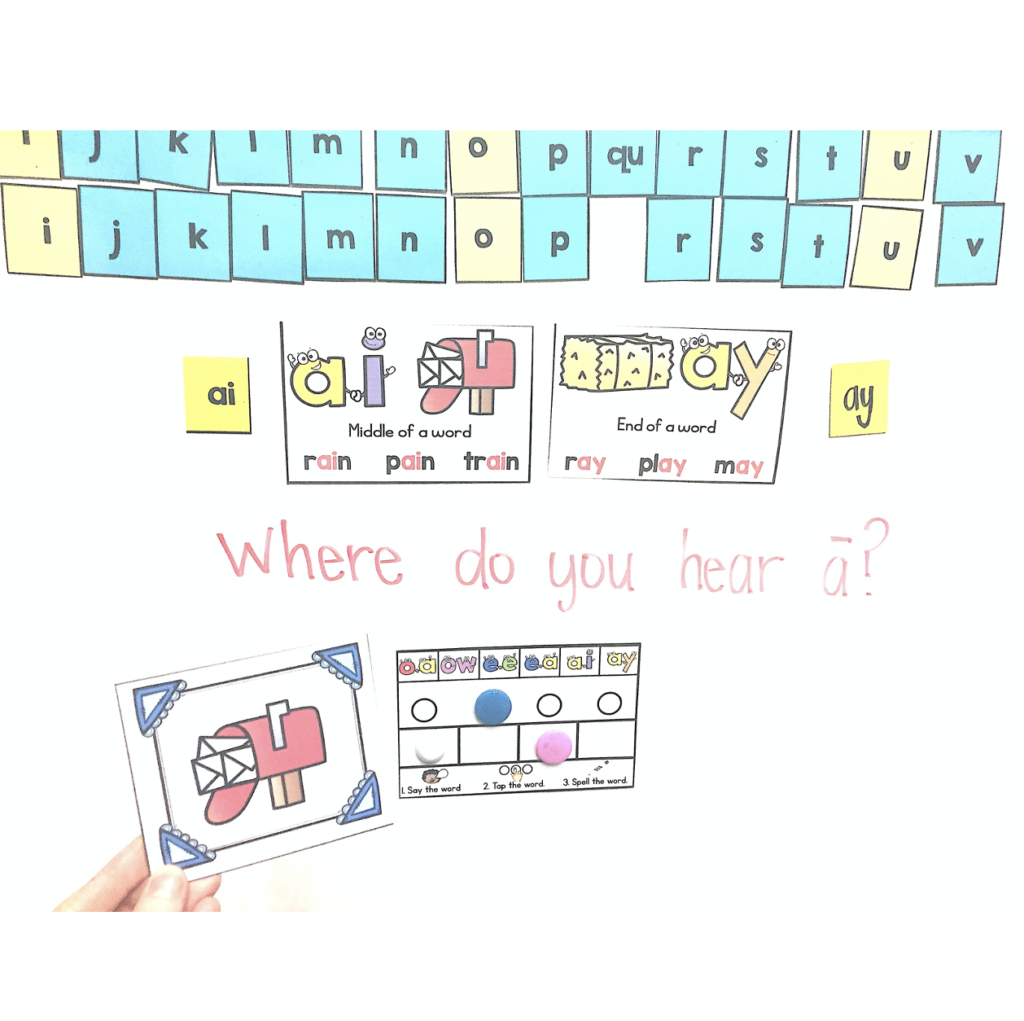
Integrating Phonemic Awareness
I love to continue to connect the sounds to their graphemes or word families in meaningful ways.
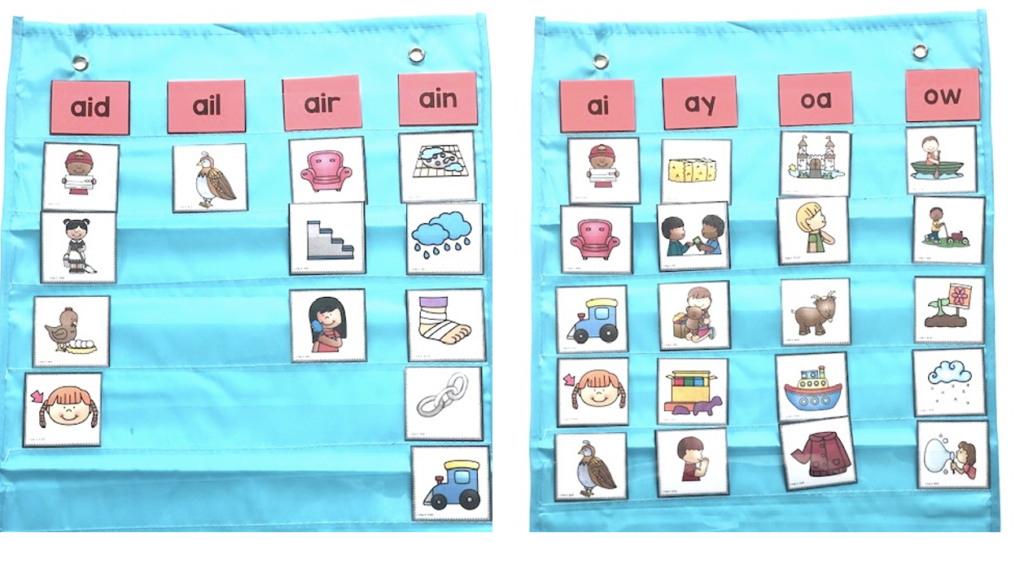
The first pocket chart you see shows an activity where students say a word, break it up into onset and rime (for example: p-aid and m-aid), then find the letters that match the rime (word ending). For example, they will pick a picture card. I will say the name of the word and students will repeat: “paid”. Then, they break it up: “p-aid”. Last, they put the picture under the column with the letters <aid>. You can follow up by having them write the word family on their white boards. This activity would be done while learning about <ai>.
The chart next to it shows a similar activity, but it is done after learning about vowels teams for long a and long o. For this activity, they are isolating the vowel sound, then deciding which grapheme is correct, based on the placement of that sound. For example, they would know that “hay” is <ay> because the sound long a and it is at the end of the word.
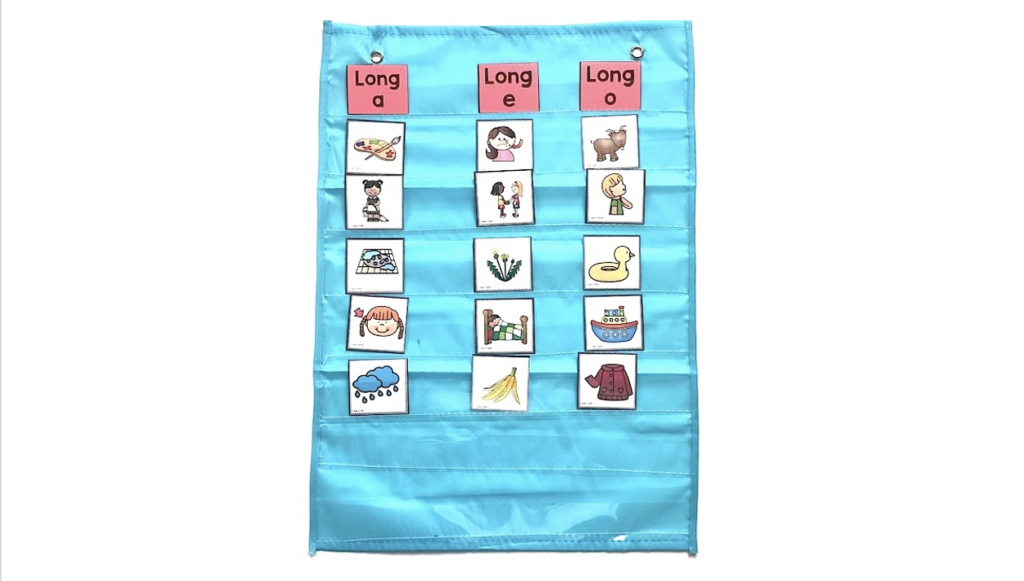
This pocket chart above could be used before you even teach any vowel teams because the kids are just listening for the vowel sound. this is a great way to begin the unit. It is purely phonemic awareness (no letters).
Developing Automaticity at the Word Level
Here are some different activities that I do with my students to provide practice decoding words with vowel teams.
For guided practice, I build more words using letter tiles. Together we practice decoding the words. Before reading, I’ll ask: “What sound will <ea> make?” (or whatever vowel team we’re working on).
Word lists seem boring, but they are great practice. Here, I’ve instructed studnets to highlight the vowel teams and label the vowel to show the sound.
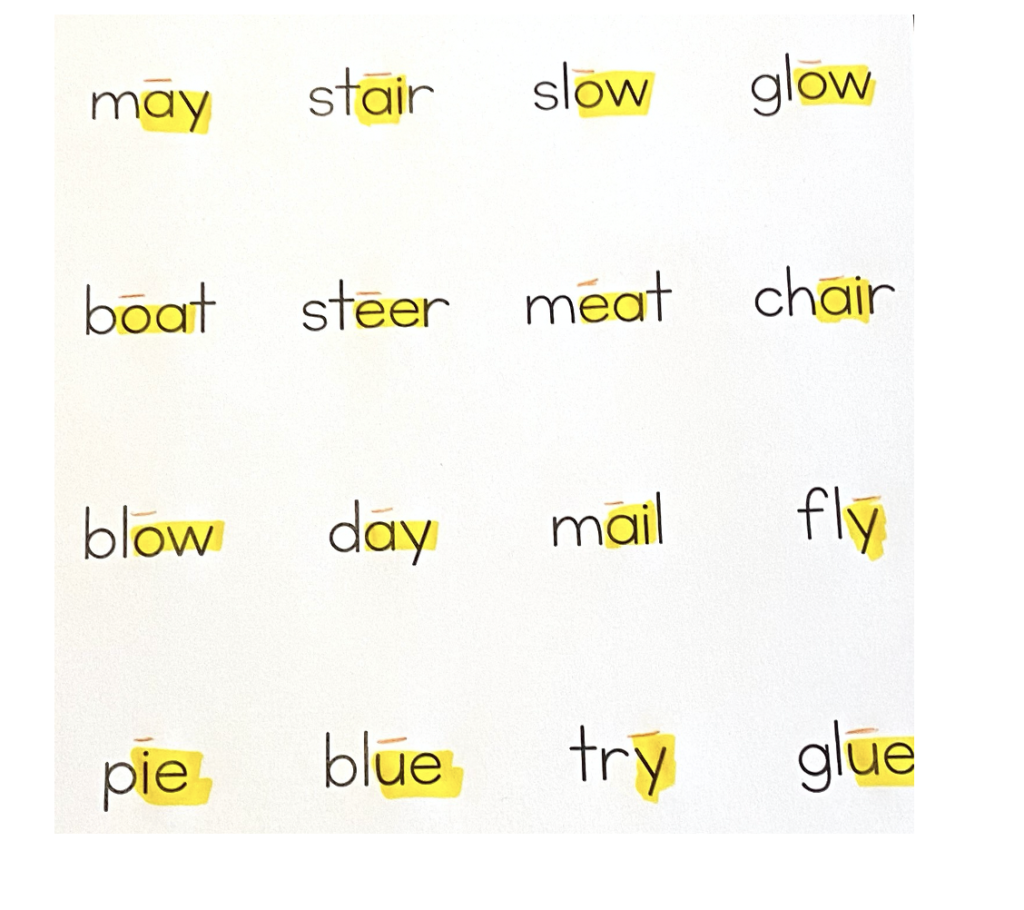
I also have tons of different printables like this to give more practice decoding words with vowel teams.
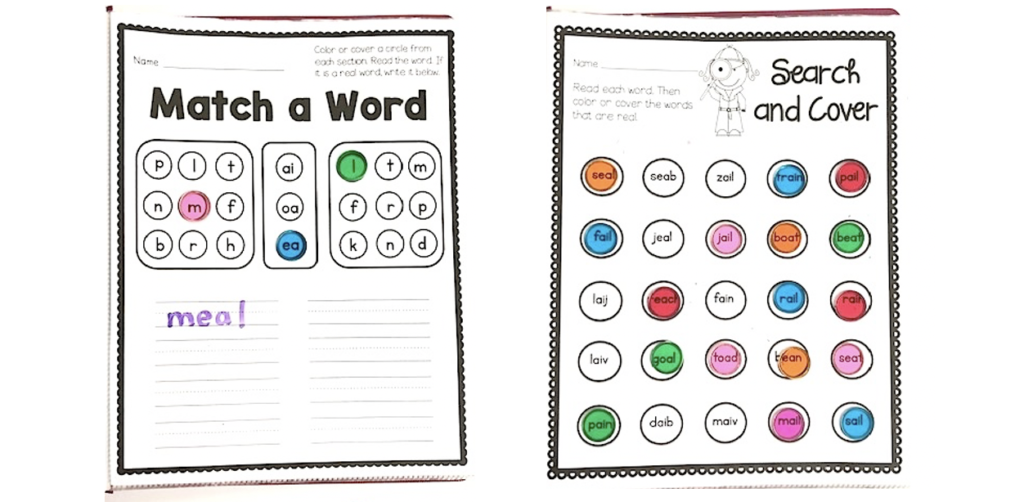
I also do a lot of word sorts and onset-rime mix and matching.
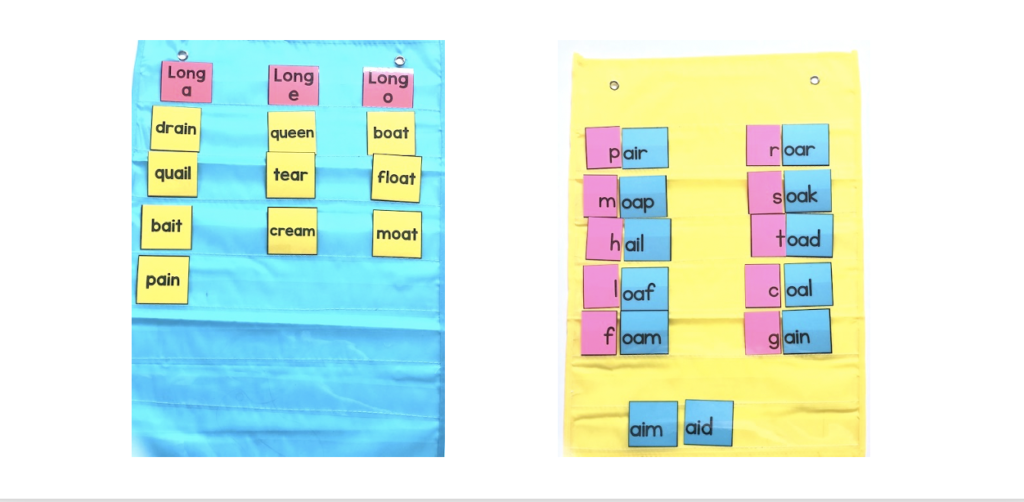
Decoding Vowel Teams within Connected Text
The goal of reading is not just to read words in isolation. That is just the beginning to get us to our goal! Next, I move students into reading words with vowel teams with connected text. Some kids do not need a lot of scaffolding with this. Others will take a little more time to jump to fluently reading sentences and reading passages. For this reason, I try to mix it up a bit with activities like these:
Sentence scramblers are always a favorite! You can set this up as center or use it in a small group setting.
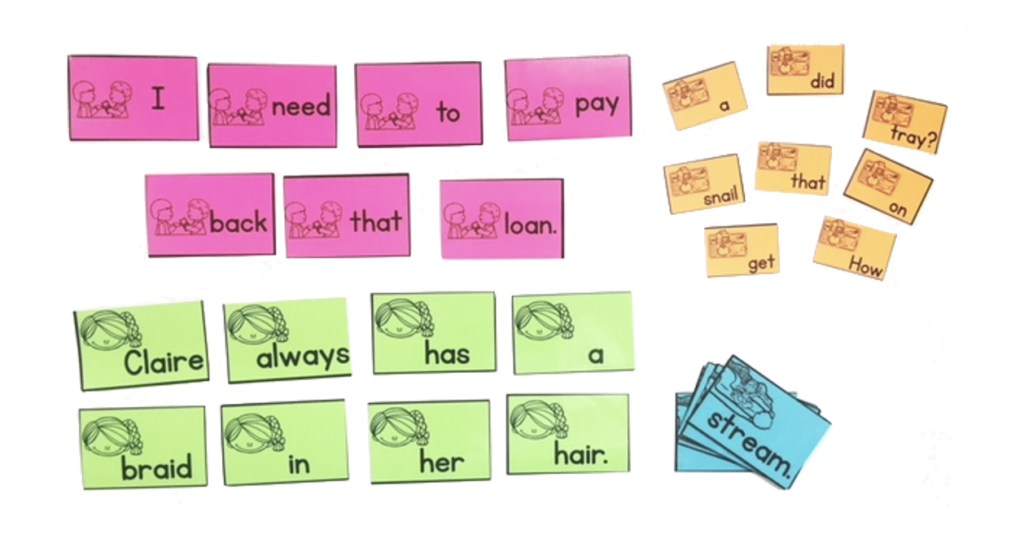
This activity is similar, except students are building their own sentences. It gives them a little more help with the parts of a sentence, too!
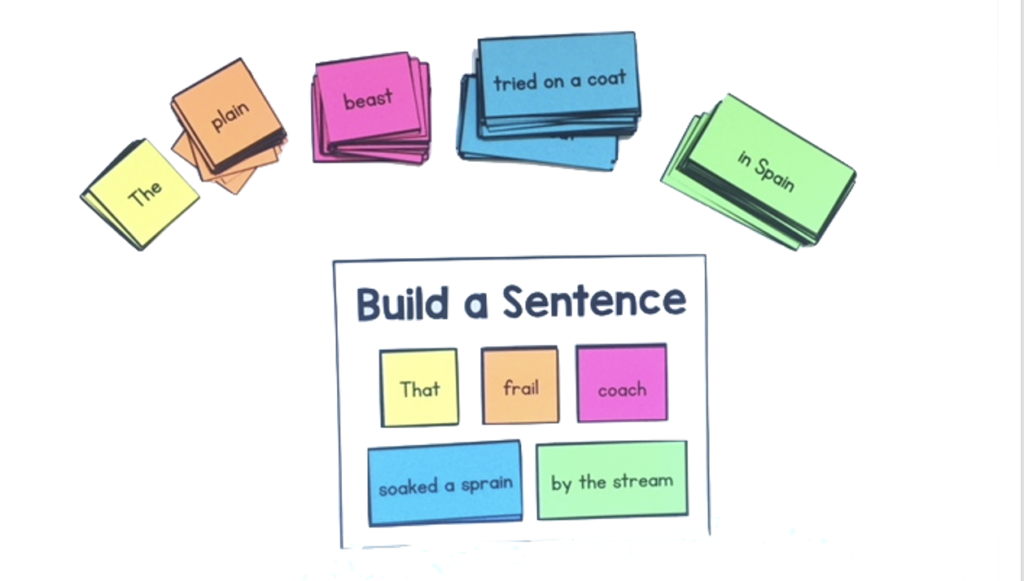
This activity comes from my Printable Intervention. Students match the phrases to practice reading different sentences.
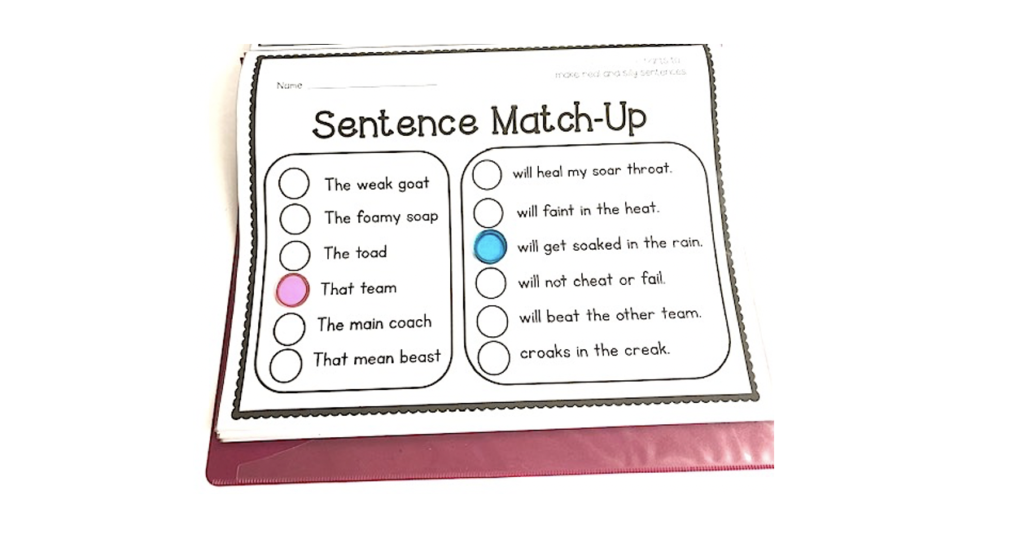
This is one of my favorite activities. These decodable sentences focus on words with vowel teams. They also give students practice with phrasing and very basic sentence structure. This lends itself to some basic comprehension practice at the sentence level as well.
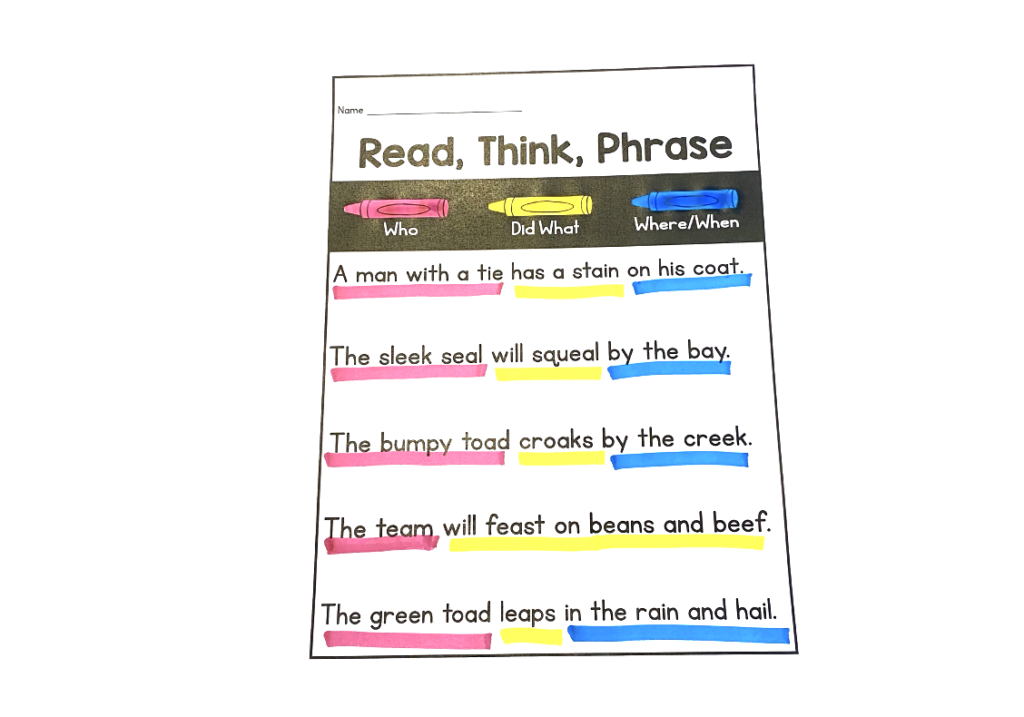
Building Fluency
Once my students are ready, I give them practice with short reading passages. The goal is now fluency and comprehension. These are phonetically-controlled, which means that the words in these texts only have phonetic elements that they have been taught.
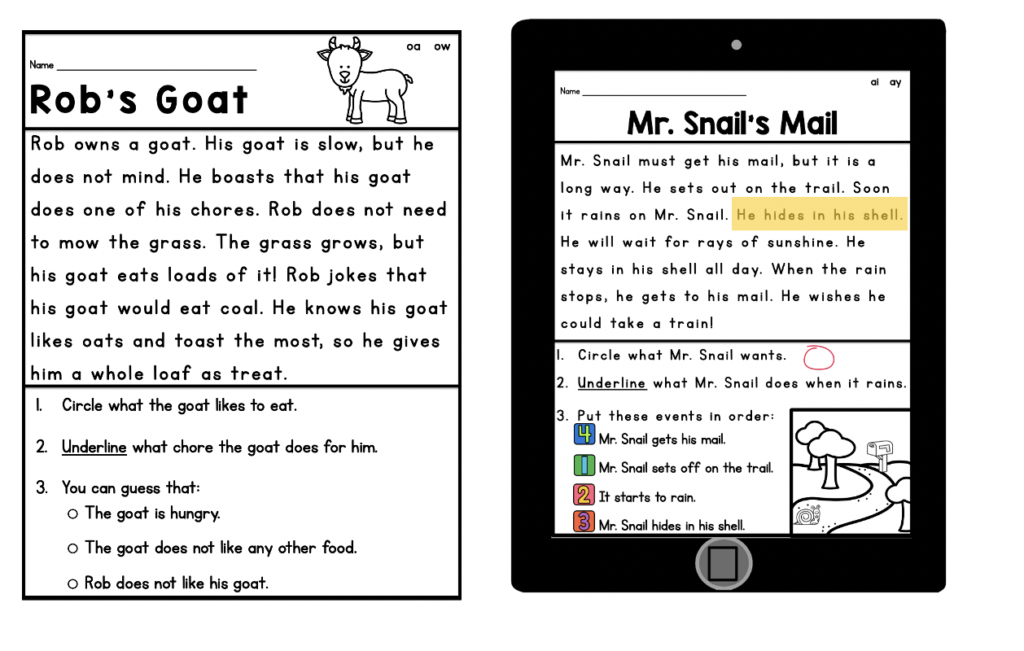
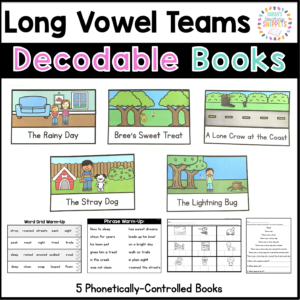
Spelling and Dictation
Spelling was something I way overlooked for years. I’ve talked about this a bit in other posts. I did a lot of decoding, but I wasn’t giving enough time to encoding (spelling). I love using sound boxes to help with that! Learning about the orthographic mapping theory has changed the way I teach!
I also see the importance of dictation. With dictation, I say a phonetically-controlled phrase or short sentence and students write it. It’s that next step with spelling. Spelling a word in a sentence can be a lot harder than just the word on its own. There is a lot more going on!
A great question I get a lot (and still am trying to answer) is how much should we focus on spelling accuracy with vowel teams. Can we move on if they are decoding the words but not spelling correctly? First, as I mentioned above, there is no rule or trick to help students decide between a vowel team and the silent e when spelling. Second, homophones are a headache! So what do we do?
Well, often the spelling will come later as they read more and see the correct spelling over and over. It is normal for first graders and even second graders to mix up spelling in logical ways. (For example, they may put a silent e when it’s really an <oa> word or use <ee> when it’s <ea>. For that age, “correct” to me means seeing evidence that they are using their knowledge of spelling patterns, sound-symbol associations, and spelling “rules” (or generalizations). That means they are not spelling “braid” as “brayd” or “broad” or “brad”. If they spell it “brade”, that shows they are applying what they know. Soon, however, students do make that transition to more accurate spelling, especially with high-frequency words.
Students with dyslexia will likely still struggle with accurate spelling. We want to give them as many tools as we can! For your students with dyslexia, I hope you consider not grading down for spelling on writing assignments and other content areas. It’s also important to keep in mind that ea/ee has no trick or rule that can help distinguish between spellings. I STILL frequently mix up ea/ee words. Thankfully we have technology to help us! My advice on these is to focus on the high-frequency words when it comes to spelling.
High-frequency words with Vowel Teams
Speaking of high-frequency words, that is something that I focus on when it comes to spelling. I think it’s a good place to start considering spelling words with long vowels can be so tricky. It’s a big ask for them to spell all vowel team words correctly, so I start with the most common.
After you show your students how the letters and sounds match up, use flashcards to review those words every day. Continue to give your students practice spelling those words until they become familiar.
Click here to see a resource I made with high-frequency words using long vowel teams.
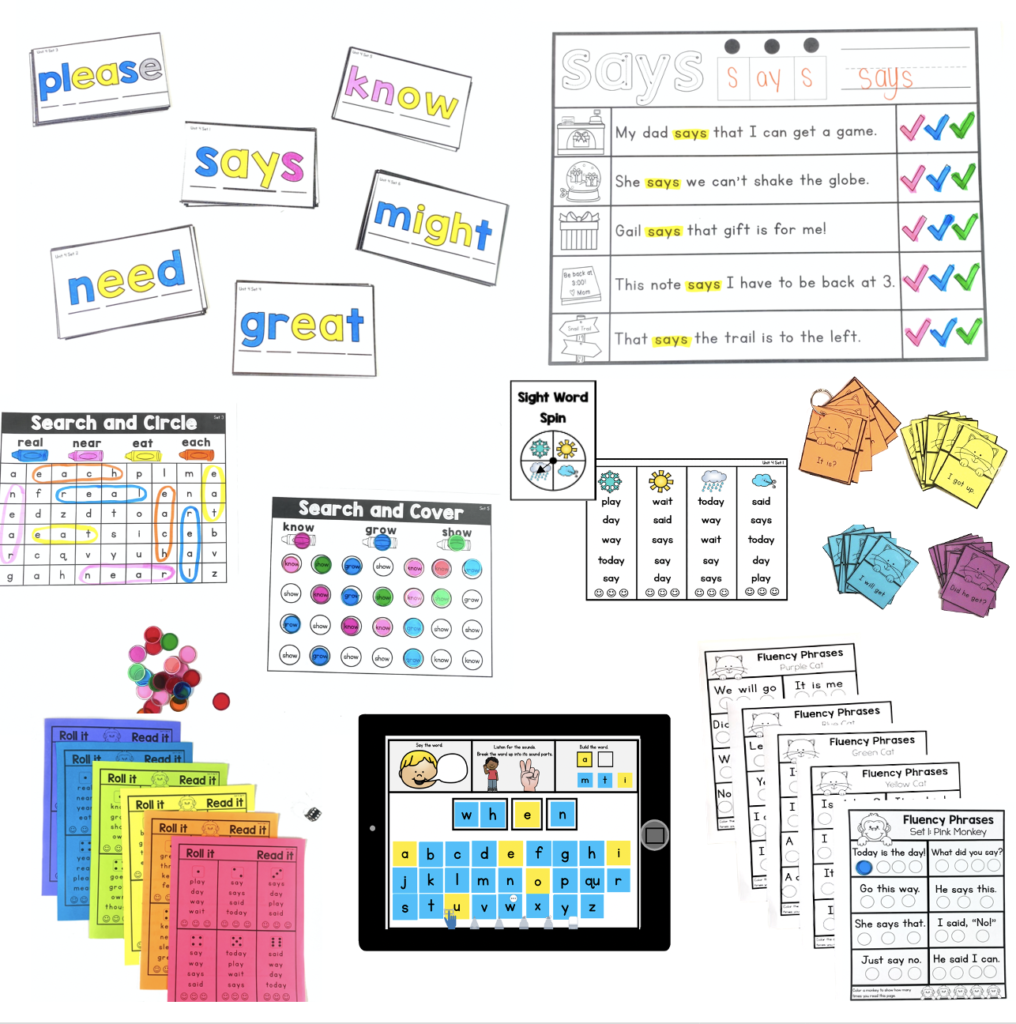
If you are looking for lesson plans for long vowel teams, check out my Systemic Phonics Unit 4. This is packed with resources. There are detailed lesson plans, an interactive teaching guide, posters, and student practice pages.
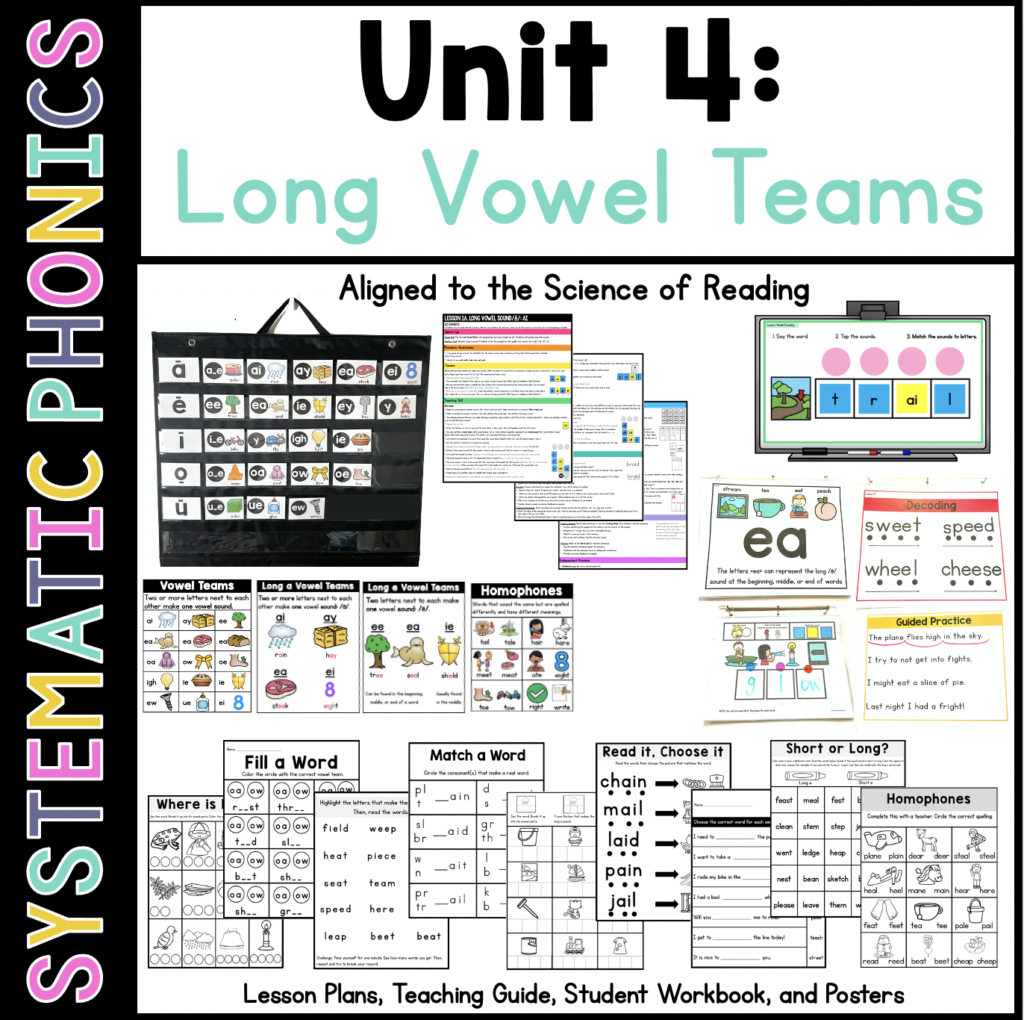
When to Teach Vowel Teams
Vowel teams are the fourth syllable type that I teach (after closed, open, and silent e)
For first grade, this usually falls in the spring. Then, in second grade it is retaught in the fall.
Vowel Team Homophones
This is a great time to introduce homophones because so many have vowel teams! Homophones are words that sound the same but have different spellings and different meanings. Your students will be noticing and questioning these already, I’m sure! Kids usually do not learn all the spellings right away, but it does help to point out these homophones.
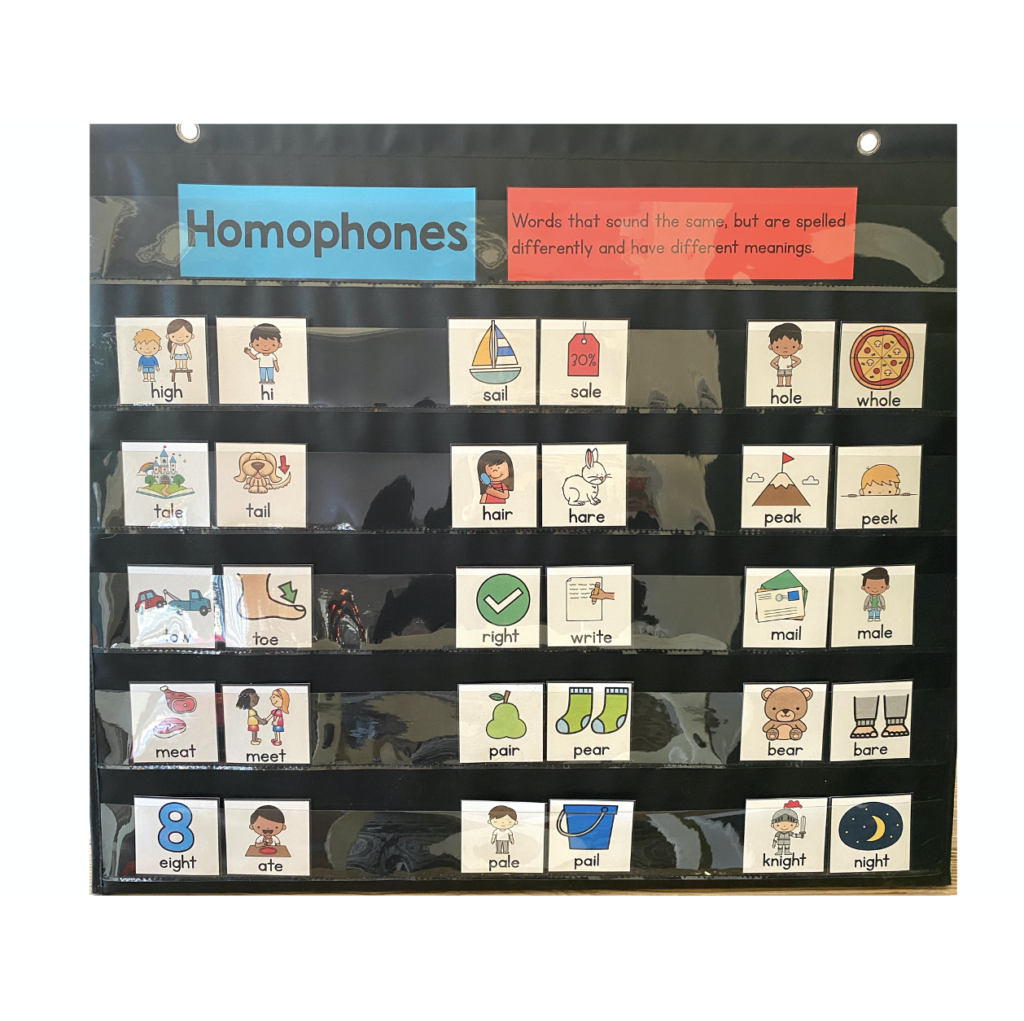
Long Vowel Teams Resources
Click here to check out all of my resources for vowel teams.
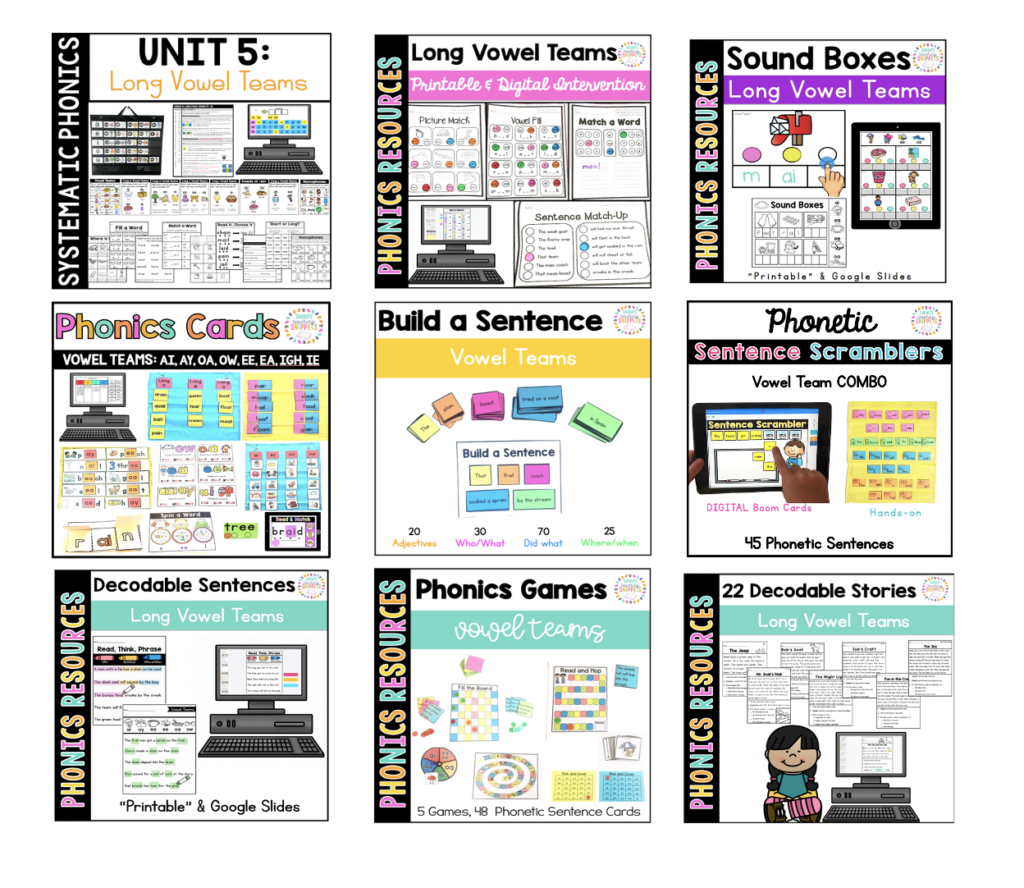
I hope this post has been helpful! As you can see, it’s been a journey for me as I learn and grow as a teacher. There is so much to learn!









